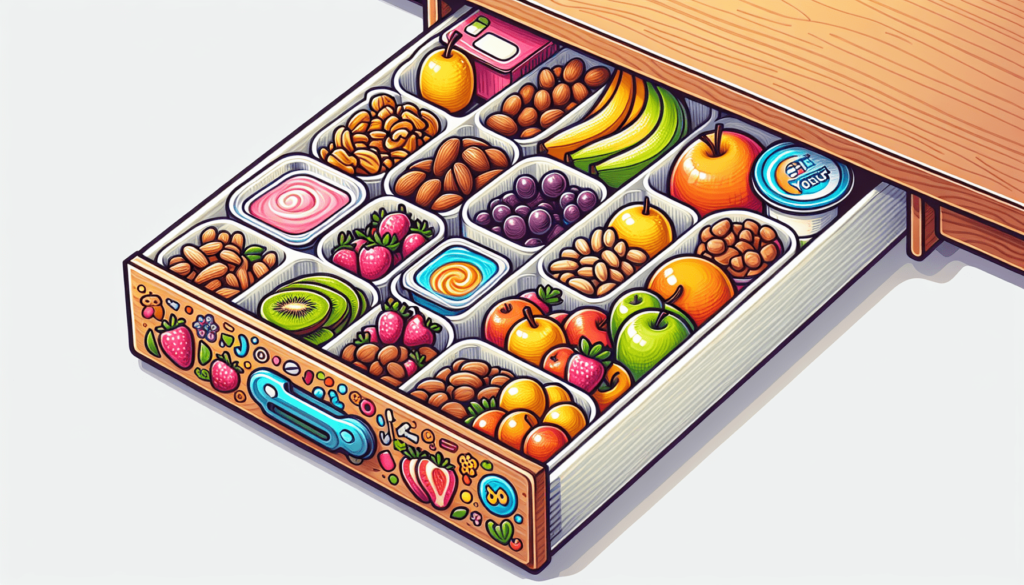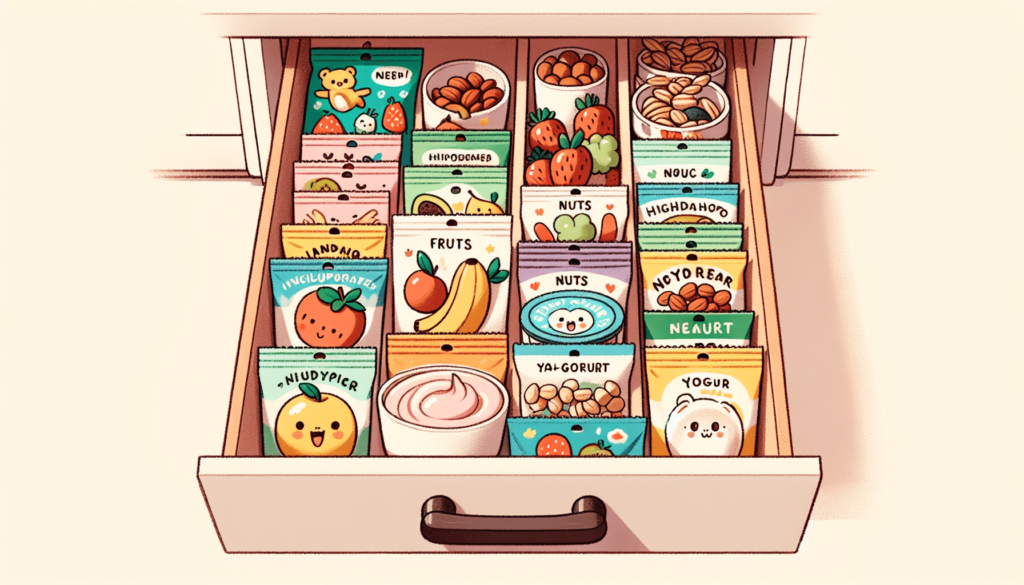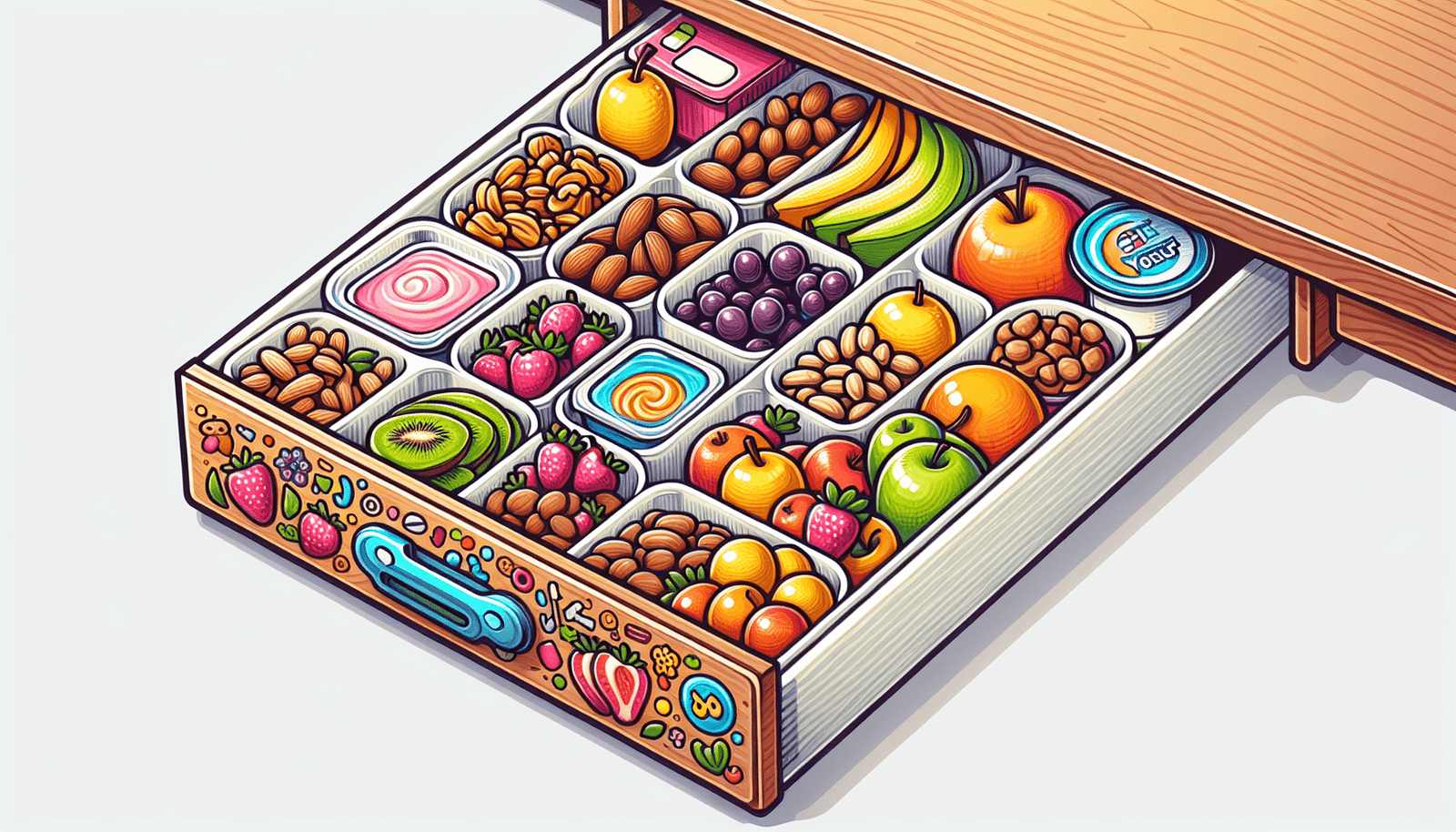Creating a Functional and Accessible Snack Drawer for Kids
When it comes to making your home more kid-friendly, creating a snack drawer that children can reach independently is a game-changer. This simple and practical solution not only encourages independence but also helps keep your kitchen organized and clutter-free. In this article, you will learn how to create a snack drawer that is accessible to kids while still maintaining the desired level of organization.

Why Create a Snack Drawer for Kids?
Having a designated snack drawer for kids serves several purposes. It allows children to pick snacks on their own, promoting independence and decision-making skills. By providing easy access to healthy snack options, you can encourage your children to make nutritious choices. Additionally, a well-organized snack drawer helps streamline meal and snack times, making your daily routine more efficient and stress-free.
Choosing the Right Drawer
The first step in creating a snack drawer for kids is selecting the appropriate drawer or cabinet. Ideally, the drawer should be located at a height that is easily accessible to the children, such as the lower cabinets in the kitchen. Make sure the drawer is sturdy and can withstand regular use by young hands. Consider installing childproof locks if you have toddlers or curious little ones who may try to access the snacks unsupervised.
Organizing Your Snack Drawer
Once you have chosen the right drawer, it’s time to organize it effectively. Start by categorizing snacks into different sections based on type (e.g., fruits, granola bars, crackers) to make it easier for kids to find what they want. Use small baskets or containers to separate individual snacks and prevent the drawer from becoming messy. Label each section with pictures or words to help children identify and choose their snacks independently.
Stocking Your Snack Drawer
When stocking your snack drawer, focus on providing a variety of healthy options that cater to different tastes and preferences. Include a mix of fresh fruits, vegetables, whole-grain crackers, nuts, yogurt, cheese, and homemade treats. Avoid stocking the drawer with sugary snacks or treats high in preservatives. Instead, opt for nutritious and wholesome snacks that will fuel your children’s bodies and minds.
Rotating Snacks Regularly
To keep things interesting and prevent boredom, consider rotating the snacks in the drawer regularly. Introduce new items, swap out snacks that have been sitting for too long, and adjust the selection based on your children’s feedback and preferences. By keeping the snack drawer fresh and exciting, you can ensure that your kids look forward to choosing snacks and develop healthy eating habits over time.
Involving Kids in Snack Choices
Empower your children by involving them in the selection and stocking of the snack drawer. Take them grocery shopping with you and let them choose their favorite snacks within the guidelines you have set. Encourage them to try new foods and flavors, and listen to their input on what snacks they enjoy the most. By making the snack drawer a collaborative effort, you can teach your children valuable lessons about nutrition, responsibility, and decision-making.

Setting Snack Time Rules
Establish clear rules and guidelines for snack time to prevent overeating and encourage mindful eating habits. Limit the number of snacks your children can have per day, set specific snack times throughout the day, and emphasize the importance of balance and moderation. Encourage your kids to listen to their bodies and eat when they are hungry, rather than out of boredom or habit. By instilling healthy snack habits early on, you can help your children develop a positive relationship with food that will benefit them in the long run.
Encouraging Independence and Responsibility
Allowing your children to access the snack drawer independently promotes a sense of autonomy and responsibility. Teach your kids how to make smart snack choices, portion control, and proper snack etiquette. Encourage them to clean up after themselves, dispose of wrappers and containers properly, and keep the snack drawer organized. By empowering your children to take ownership of their snack choices, you help them develop important life skills and habits that will serve them well into adulthood.
Monitoring and Supervision
While it’s essential to encourage independence, it’s also crucial to monitor your children’s snack choices and consumption. Keep an eye on the snack drawer to ensure that your kids are making nutritious choices and not overindulging. If you notice that certain snacks are consistently left untouched or that your children are consuming too many unhealthy options, intervene and adjust the snack selection accordingly. Offer guidance and support to help your children make informed decisions about their snacking habits while still respecting their autonomy.
Teaching Healthy Snacking Habits
In addition to providing nutritious snacks, take the opportunity to educate your children about healthy snacking habits. Teach them about the importance of eating a balanced diet, choosing whole foods over processed snacks, and listening to their bodies’ hunger cues. Encourage your kids to eat mindfully, savoring each bite, and appreciating the flavors and textures of different foods. By instilling a positive attitude towards snacking and nutrition, you can help your children develop a healthy relationship with food that will benefit them throughout their lives.
Creating a Snack Drawer Routine
Establishing a consistent snack drawer routine can help make snack times more predictable and enjoyable for your children. Set specific snack times throughout the day, such as mid-morning, afternoon, and after-school, to provide structure and avoid constant grazing. Encourage your children to wash their hands before accessing the snack drawer, choose their snacks mindfully, and eat them at the designated snack area. By creating a routine around snack times, you can teach your children the importance of structure, moderation, and healthy eating habits.
Making Snack Time Fun and Engaging
Transform snack time into a fun and engaging experience by incorporating creative ideas and activities. Create themed snack days based on colors, shapes, or seasons, and let your children choose snacks that fit the theme. Encourage your kids to help prepare and pack their snacks, experiment with new recipes, and enjoy snacks together as a family. Consider hosting a snack-tasting session where your children can try different snacks and rate them based on taste and texture. By infusing creativity and excitement into snack time, you can make it a memorable and enjoyable part of your children’s day.
Troubleshooting Common Snack Drawer Issues
While a snack drawer can be a convenient and practical solution for busy parents, it’s essential to address any common issues that may arise. Some common problems with snack drawers include snacks going stale, getting disorganized, or not being restocked regularly. To troubleshoot these issues, establish a weekly snack drawer maintenance routine to check for expired items, reorganize the snacks, and restock as needed. Encourage your children to help with these tasks, teaching them responsibility and accountability for keeping the snack drawer clean and well-maintained.
Embracing the Benefits of a Kid-Friendly Snack Drawer
Creating a snack drawer that children can reach is a simple yet effective way to promote independence, encourage healthy eating habits, and streamline snack times in your home. By following the tips and strategies outlined in this article, you can create a functional and child-friendly snack drawer that works for both kids and parents. Make snack time an enjoyable and stress-free experience by empowering your children to make smart snack choices, fostering independence and responsibility, and cultivating a positive attitude towards food. With a well-stocked and organized snack drawer, you can transform snack times into a fun and interactive part of your family’s daily routine.

